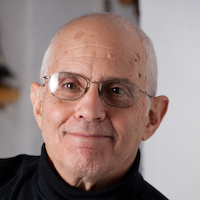But There May Be More Yogis Than Churchgoers.
The latest installment in the long history of religious myopia has Father Gabriele Amorth proclaiming, “Practicing yoga brings evil.” The Vatican’s former chief exorcist believes that yoga is the Devil’s work because “you think you are doing it for stretching your mind and body, but it leads to Hinduism.” Never mind that only a tiny percentage of long-time yoga practitioners identify as Hindus, and that Googling “Christian yoga” yields 437,000 results. Yoga is satanic, says Father Amorth, “just like reading Harry Potter.” Well, what do you expect from a destroyer of demons who sees his Church’s child molestation scandal as proof that the anti-Christ has infiltrated its ranks.
At age 86, Father Amorth will not be with us much longer. Imagine his surprise if what he calls “the false belief of reincarnation” is not so false after all, and he one day returns to find that yogis and J.K. Rowling readers are more plentiful than ever. The former surely will be, because Americans are, for the most part, pragmatic, pluralistic and evidence driven, and yoga appeals to all those values, Vatican paranoia notwithstanding.
When I say that yoga is here to stay, I don’t just mean its current expression as a health oriented physical discipline. I mean the full yogic package, as described in classical texts like the Bhagavad Gita, the Yoga Sutras and the Upanishads. The repertoire of yogic precepts and practices has appealed to Americans for both spiritual and secular reasons for over 200 years now, and its influence, already profound, continues to grow inexorably, while the old-style religion that Father Amorth represents, with its dogmatism, divisiveness and triumphalism, is withering on the vine. If the U.S. doesn’t already have more yogis than conventional churchgoers, it will soon enough.
By “yogis” I don’t just mean the estimated 15 to 20 million who stretch and bend in postural yoga classes each year. I also refer to those who are yogis in spirit if not name, in that they seek the unified consciousness that yogic texts extol and yogic practices at their best lead to. The unitive state of yoga (the word, as most people know, derives from the same root as yoke) transcends religious categories and can be reached through numerous pathways. Understood in that way, there have been an uncountable number of American yogis ever since Henry David Thoreau called himself one in “Walden,” his iconic memoir of his sojourn at Walden Pond, where the Bhagavad Gita was his constant companion. There were no yoga studios in Concord, Massachusetts, at the time, nor gurus or meditation teachers, but Thoreau and his mentor Ralph Waldo Emerson were classic yogis in that they sought, and often experienced, union with the infinite wholeness that Emerson called the Oversoul.
Those two celebrated Transcendentalists might have been the earliest examples of what we now call the “spiritual but not religious” (SBNR), which is said to be the fastest-growing cohort in surveys of religious attitudes, particularly among the young. To the extent that they aspire to the union of self and cosmos, the label-disdaining SBNRs can be called yogis. Also yogis are most American Hindus, Buddhists, Jains and Sikhs. And, in spirit, I would also include the Jews, Christians and Muslims who have turned to the long-buried esoteric disciplines of their own traditions. I don’t know how many American adherents of Sufism (a dogma-defying mystical branch of Islam) there are, but they are certainly more plentiful and diverse than most people realize. “Jewish meditation” yields 450,000 Google results. And, in the past decade or so, interest in contemplative Christianity has blossomed; practitioners of the meditative method known as Centering Prayer alone number in the six figures. We can also add the millions who have learned to meditate for the sake of mental and physical well-being, often at the recommendation of a physician or therapist. And now, with the likes of Oprah, Ellen DeGeneres and Russell Brand advocating Transcendental Meditation — as the Beatles did 40 years ago — there is no telling how many there might be in Father Amorth’s nightmare future.
If you think I am being overly inclusive in my informal head count of yogis, feel free to use “yogi-like” or some such qualifier. The point remains that what classical yoga aspires to is universal; the urge to unity and wholeness knows no religious, ethnic or national boundaries, and the methods derived from yogic insights tend to be adaptable to most belief systems and lifestyles. That makes it quite compatible with American values, and therefore as likely as Harry Potter to retain its appeal. Father Amorth can rest assured that Catholicism will not disappear. It is, however, likely that future Catholics will draw more inspiration from Thomas Merton, Meister Eckhart, Teresa of Avila and other storied mystics of the tradition than from “The Exorcist” (his favorite movie) or most of the Popes. Horror of horrors, they might also see come to see Jesus himself as a great yogi.










Read 8 comments and reply